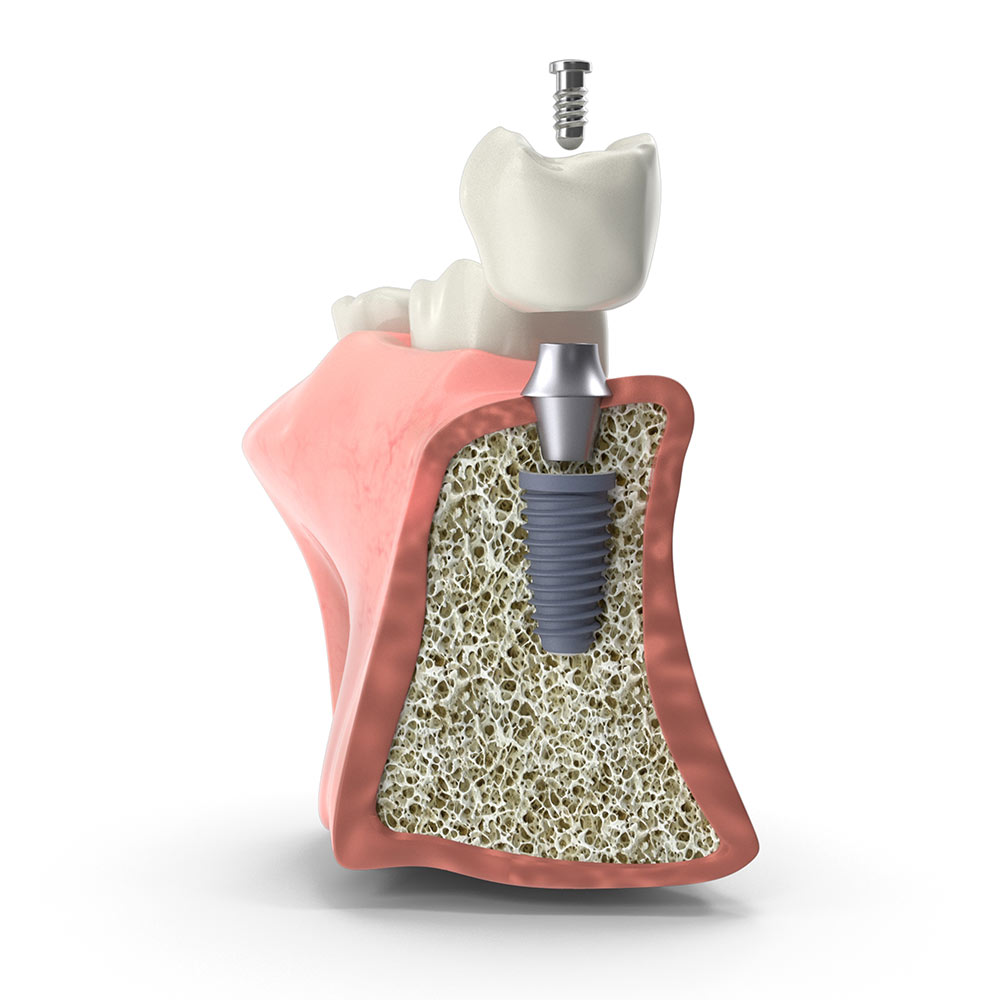Natural Look & Feel: Function and appearance similar to real teeth.
Long-Lasting: Durable, reliable, and can last a lifetime.
Prevents Bone Loss: Keeps jawbone strong and healthy.
Protects Adjacent Teeth: No need to file down neighbouring teeth.
Boosts Confidence: Restores your smile, comfort, and self-esteem.


Pro: Fixed, stable, and natural-looking.
Con: Requires filing down healthy teeth.
Pro: Affordable, non-invasive, and easy to repair.
Con: Removable and less stable than fixed options.
Pro: Minimally invasive, little effect on nearby teeth.
Con: Less durable, often temporary, not suitable everywhere.
Pro: No treatment or cost upfront.
Con: Teeth may shift, bite/jaw problems, and bone loss risk.
Missing teeth affect not only your smile but also your ability to eat and speak comfortably. Gaps can cause nearby teeth to tilt or over-erupt, making future treatment more complex and potentially leading to further tooth loss.
Dental implants are the most natural and long-lasting solution — they prevent bone loss, protect healthy teeth, and restore your full smile and confidence.
Enjoy your meals, conversations, and photos again — because your smile matters!
You can replace missing teeth with implants, bridges, or dentures, depending on your needs.
Dental implants are the most natural and long-lasting option — they replace the tooth root and support a crown that looks and feels like a real tooth.
A dental implant is a small titanium post that replaces the root of a missing tooth. It’s gently placed under local anaesthetic and bonds naturally with your jawbone over a few months. Once healed, a crown, bridge, or denture is attached to restore your smile.
Implants are strong, natural-looking, and long-lasting, but like natural teeth, they need regular cleaning and check-ups to stay healthy.
An immediate dental implant is placed right after a tooth is removed, during the same appointment. This means you don’t need to wait for the area to heal before getting your implant. In some cases, a temporary crown can be fitted straight away, so you leave with a complete smile the same day.
In most cases, yes — nearly any missing tooth can be replaced with a dental implant, provided there is enough healthy bone in the jaw.
Your dentist will assess bone quality and quantity during your consultation. If there isn’t sufficient bone, grafting or regeneration procedures (such as sinus lift or ridge preservation) can help create a strong foundation for the implant.
Placing an implant soon after extraction, when suitable, often helps preserve bone and make treatment simpler.
Ridge Preservation
Once a tooth is lost, the bone and gum will begin to recede. If you later decide to have an Implant fitted it may mean that the Implant would sit too high or the Crown would sit too low without a bone graft. This can be prevented in many cases by Ridge preservation & right techniques at the time of extraction which minimize the bone shrinkage & changes after an Extraction.
Can I replace all my teeth if they are missing?
Solutions available when all teeth are missing or loose and hopeless:
-A fixed bridge can be attached to 4/6 Implants placed in the jaw. (all on 4/all on 6)
-A removable denture made & fixed by 2-4 Implants to your jaw.
-A conventional denture without any fixation element to the jaw.
Often yes — unlike a bridge, an implant doesn’t require trimming adjacent teeth and helps preserve the jawbone. It’s a more long-lasting and natural option.
We care about the protection of your data. Read our Privacy Policy.
Webdesign by EyeMedia Creative